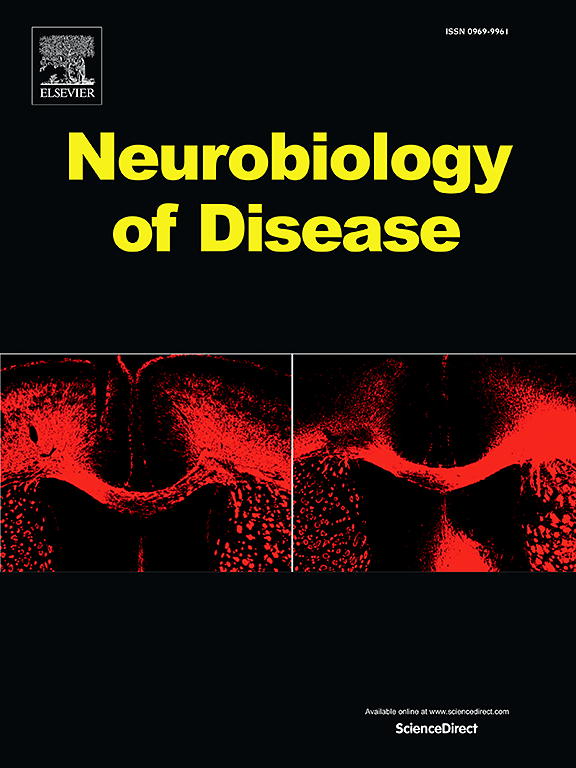Mutations in hnRNP A1 drive neurodegeneration and alternative RNA splicing of neuronal gene targets
IF 5.1
2区 医学
Q1 NEUROSCIENCES
引用次数: 0
Abstract
RNA binding protein dysfunction is a pathogenic feature of multiple neurological diseases, including multiple sclerosis (MS). Neurodegeneration (the loss of, or damage to neurons and axons) is the primary driver of disease progression in MS. Herein, we utilized a novel, neuron-specific model of neurodegeneration by transducing primary mouse neurons with mutant forms of the RNA binding protein heterogeneous nuclear ribonucleoprotein A1 (hnRNP A1) identified from MS patients, including one within the M9-nuclear localization sequence of hnRNP A1 (A1(P275S)) and a second in the prion-like domain of hnRNP A1 (A1(F263S)) to test the hypothesis that neuronal hnRNP A1 dysfunction drives neurodegeneration in MS.
Examination of hnRNP A1 localization in neurons revealed an increase in nucleocytoplasmic mislocalization in neurons transduced with A1(P275S), but not A1(F263S). Yet, both A1(F263S) and A1(P275S) induced neurodegeneration evidenced by significant reductions in total neurite length and complexity and an increase in FluoroJade-C neuronal cell body staining. RNA sequencing and differential alternative splicing analysis of mutant-expressing neurons revealed dramatic changes in alternative RNA splicing of transcripts critical to neuronal function. Further, amyloid precursor protein (APP), a marker for neurodegeneration in MS, showed differential splicing in mutant-expressing neurons, which was confirmed in MS brains with hnRNP A1 dysfunction.
Overall, we have identified that hnRNP A1 plays a complex role in neuronal function and regulation by mediating the alternative splicing of neuron-specific transcripts. When neuronal hnRNP A1 function is impaired, as in disease, resultant dysfunction propagates through multiple pathways that may influence the progression of neurodegeneration in MS.
求助全文
约1分钟内获得全文
求助全文
来源期刊

Neurobiology of Disease
医学-神经科学
CiteScore
11.20
自引率
3.30%
发文量
270
审稿时长
76 days
期刊介绍:
Neurobiology of Disease is a major international journal at the interface between basic and clinical neuroscience. The journal provides a forum for the publication of top quality research papers on: molecular and cellular definitions of disease mechanisms, the neural systems and underpinning behavioral disorders, the genetics of inherited neurological and psychiatric diseases, nervous system aging, and findings relevant to the development of new therapies.
 求助内容:
求助内容: 应助结果提醒方式:
应助结果提醒方式:


